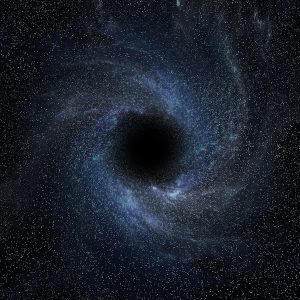In April astronomers announced what is quite possibly, the most extraordinary piece of scientific news ever. They had at last captured an image of the unobservable, always illusive, black hole – cosmic abyss so deep and dense that not even light can escape it.
Camera shy black holes stay carefully hidden in the center of galaxies, only making themselves visible by spewing bright jets of charged particles or by flinging away or ripping up nearby stars. Up close, these monsters are surrounded by glowing accretion disks of infalling material. What keeps light from escaping from a black hole is their extreme gravitational pull. The dark center of these cosmic heavy hitters remains entirely invisible.
Extremely far away and compact, capturing an image of black holes is no simple task. In addition, by definition, black holes are supposed to be invisible, though they can give off a shadow when they interact with other material around them.
To capture the image, astronomers reached across intergalactic space to Messier 87, or M87, a giant galaxy in the constellation Virgo. There, a black hole several billion times more massive than the sun is unleashing a violent jet of energy some 5,000 light-years into space.
A global network of telescopes known as the Event Horizon Telescope project collected millions of gigabytes of data about M87 using a technique known as interferometry.
Interferometry is a family of techniques in which waves, typically electromagnetic waves are superimposed, causing the phenomenon of interference, which is then used to extract information.
It’s uses are an important investigative technique in the fields of fiber optics, engineering metrology, oceanography, optical metrology, seismology, spectroscopy (and its applications to chemistry), quantum mechanics, nuclear and particle physics, plasma physics, remote sensing, biomolecular interactions, surface profiling, microfluidics, mechanical stress/strain measurement, velocimetry, optometry, and in this case, astronomy.
With the ability to finally capture an image of a black hole, the world of astronomy has the potential to change our understanding of deep space. We pride ourselves on staying on top of developments in the world of science, and continually work to create and craft precision lenses to meet the growing needs of highly powerful equipment utilized in such telescopes used in the Event Horizon Telescope project.
“We’re delighted to report to you today that we have seen what we thought was unseeable,” explained Dr. Shep Doeleman, director of the Event Horizon Telescope, during a press conference at the National Science Foundation Wednesday. “We have taken advantage of a cosmic opportunity.”
“This was a Herculean task,” explained National Science Foundation Director Dr. France Cordova, during the press conference, noting that the Event Horizon Telescope’s findings transform and enhance our understanding of black holes. The National Science Foundation has invested $28 million in Event Horizon Telescope project.
The black hole has a mass 6.5 billion times that of the Sun, according to the researchers, who captured the image of a ring-like structure with a dark central region, which is the black hole’s “shadow.”
In all, eight radio observatories on six mountains and four continents observed the galaxy in Virgo on and off for 10 days in April 2017.
The telescope array also monitored a dim source of radio noise called Sagittarius A* (pronounced Sagittarius A-star), at the heart of our Milky Way galaxy. There, 26,000 light-years from Earth, cloaked in interstellar dust and gas, lurks another black hole, with a mass of 4.1 million suns.
The network is named after the edge of a black hole, the point of no return; beyond the event horizon, not even light can escape the black hole’s gravitational pull.
Still, questions about gravity and the universe abound. “We know there must be something more,” Avery Broderick, a physicist with the Perimeter Institute for Theoretical Physics, in Waterloo, Ontario, told the audience in Washington, D.C. “Black holes are one of the places to look for answers.”
If you’re looking for lenses to help you with your quest for black holes or other astronomical studies, we can assist with your custom lens design needs.